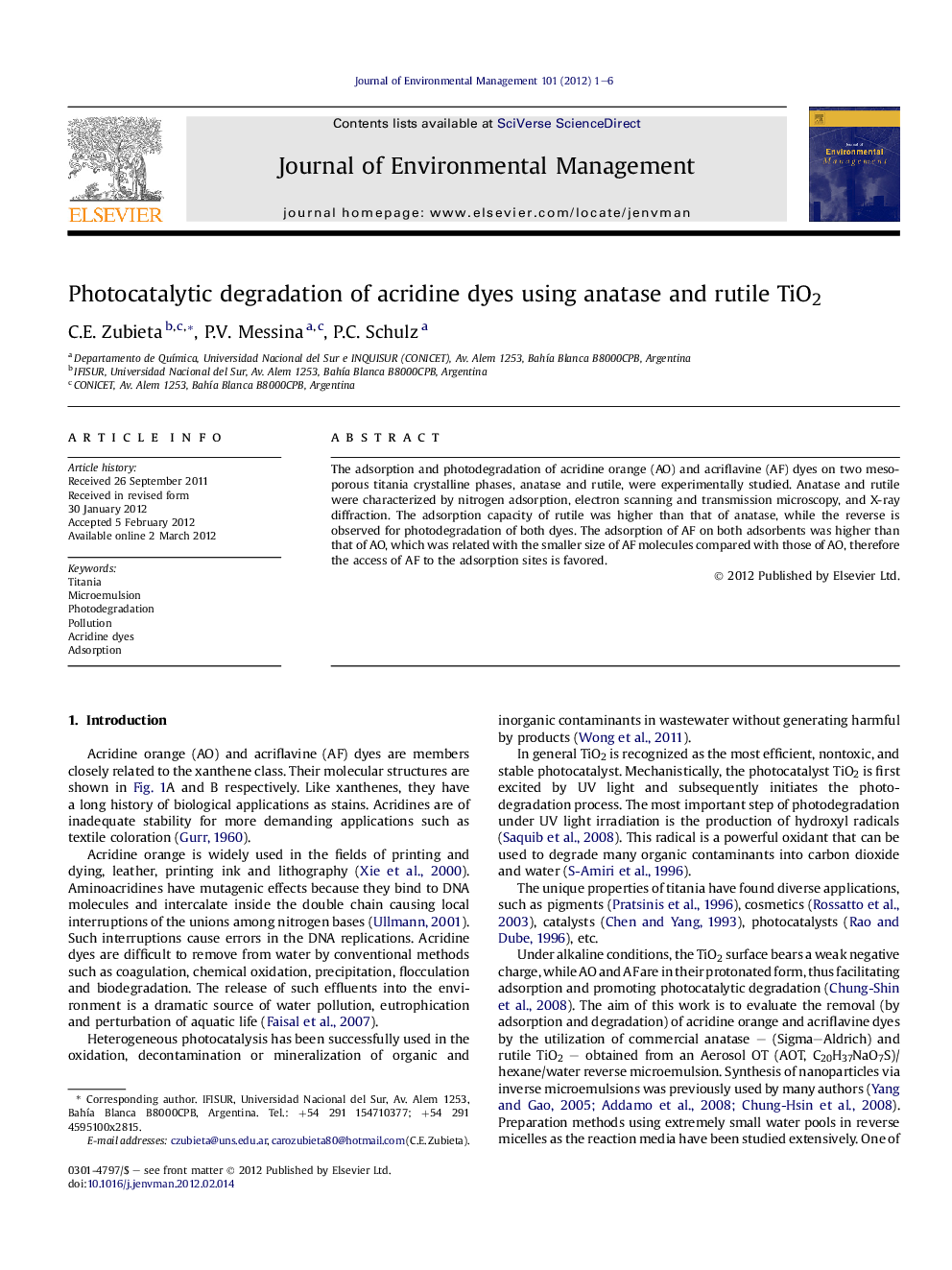| کد مقاله | کد نشریه | سال انتشار | مقاله انگلیسی | نسخه تمام متن |
|---|---|---|---|---|
| 1056829 | 1485311 | 2012 | 6 صفحه PDF | دانلود رایگان |

The adsorption and photodegradation of acridine orange (AO) and acriflavine (AF) dyes on two mesoporous titania crystalline phases, anatase and rutile, were experimentally studied. Anatase and rutile were characterized by nitrogen adsorption, electron scanning and transmission microscopy, and X-ray diffraction. The adsorption capacity of rutile was higher than that of anatase, while the reverse is observed for photodegradation of both dyes. The adsorption of AF on both adsorbents was higher than that of AO, which was related with the smaller size of AF molecules compared with those of AO, therefore the access of AF to the adsorption sites is favored.
Figure optionsDownload as PowerPoint slideHighlights
► Acridine dyes are difficult to remove from water.
► The release of such polluted waters into the environment is a dramatic source of water pollution.
► Mesoporous rutile was synthesised by a reverse microemulsion route.
► The remotion of acridine dyes on mesoporous titania were experimentally studied.
Journal: Journal of Environmental Management - Volume 101, 30 June 2012, Pages 1–6